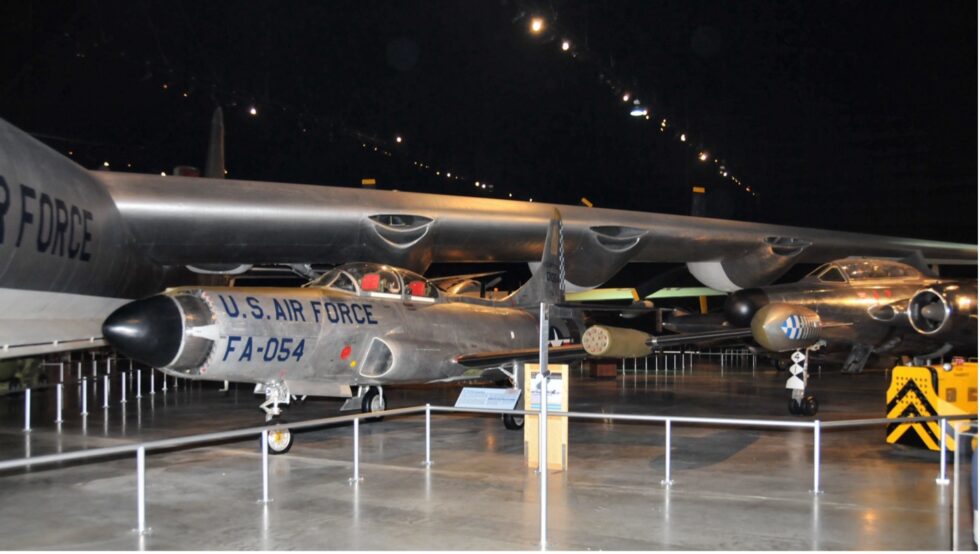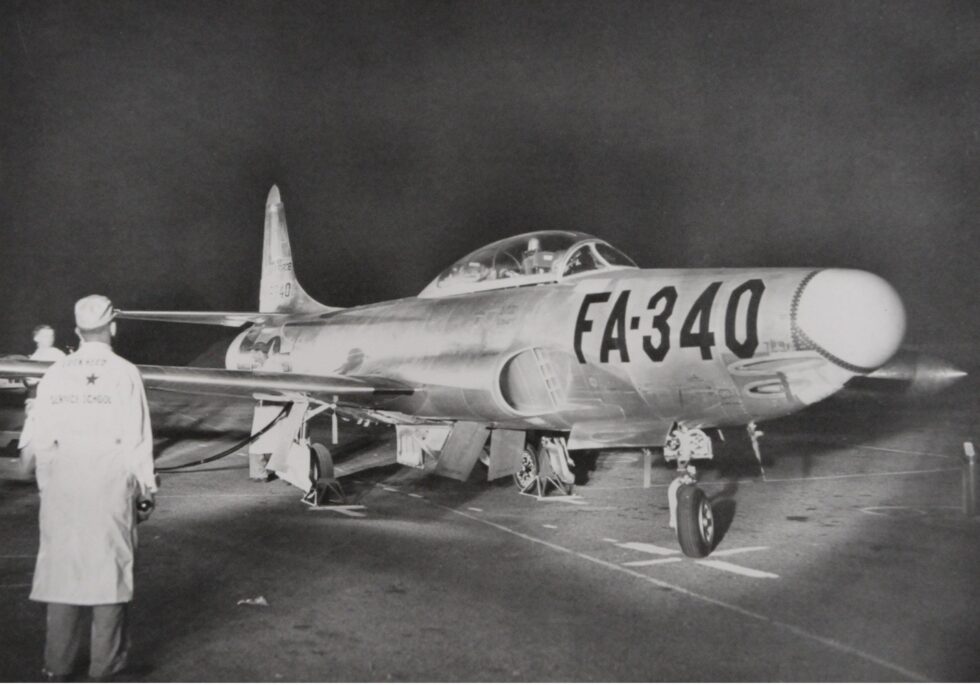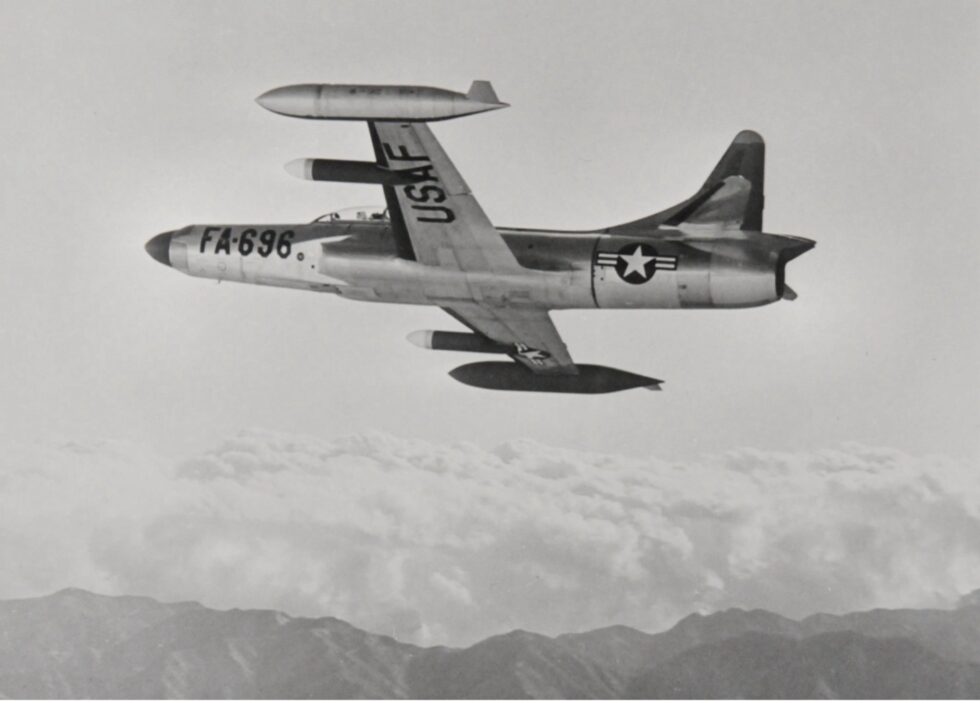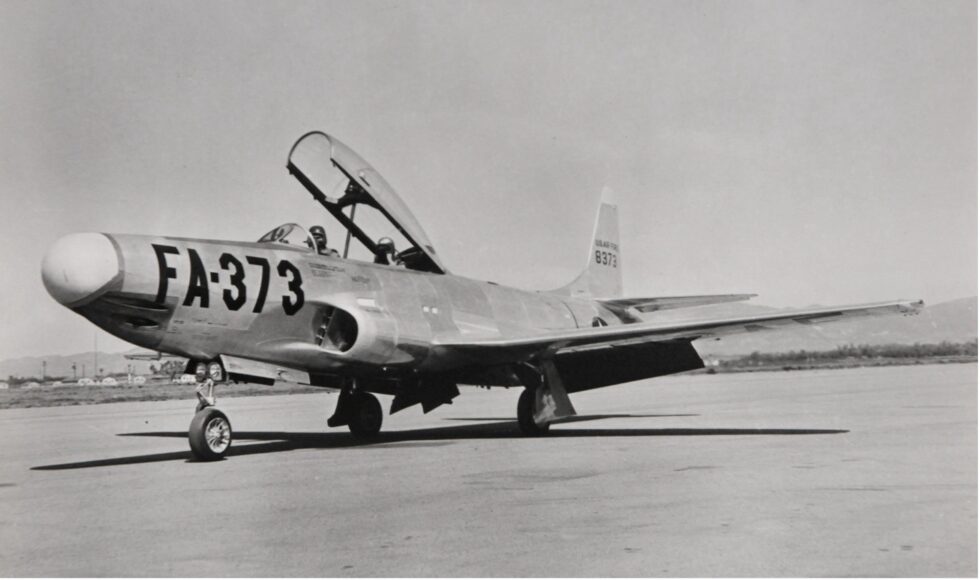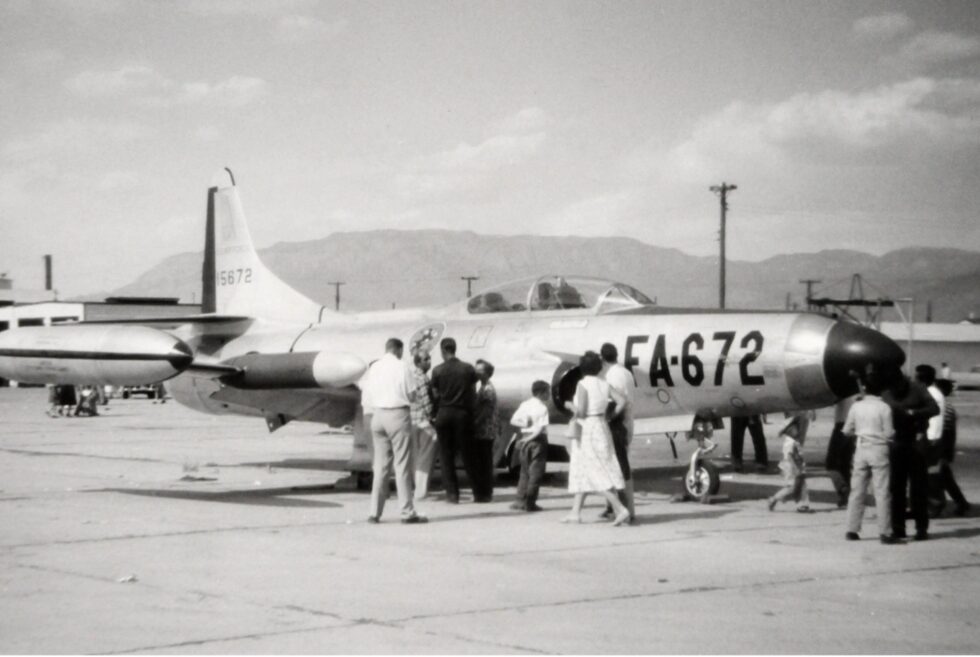U.S. Air Force 4925 TG (A) Lockheed F-94 Starfire
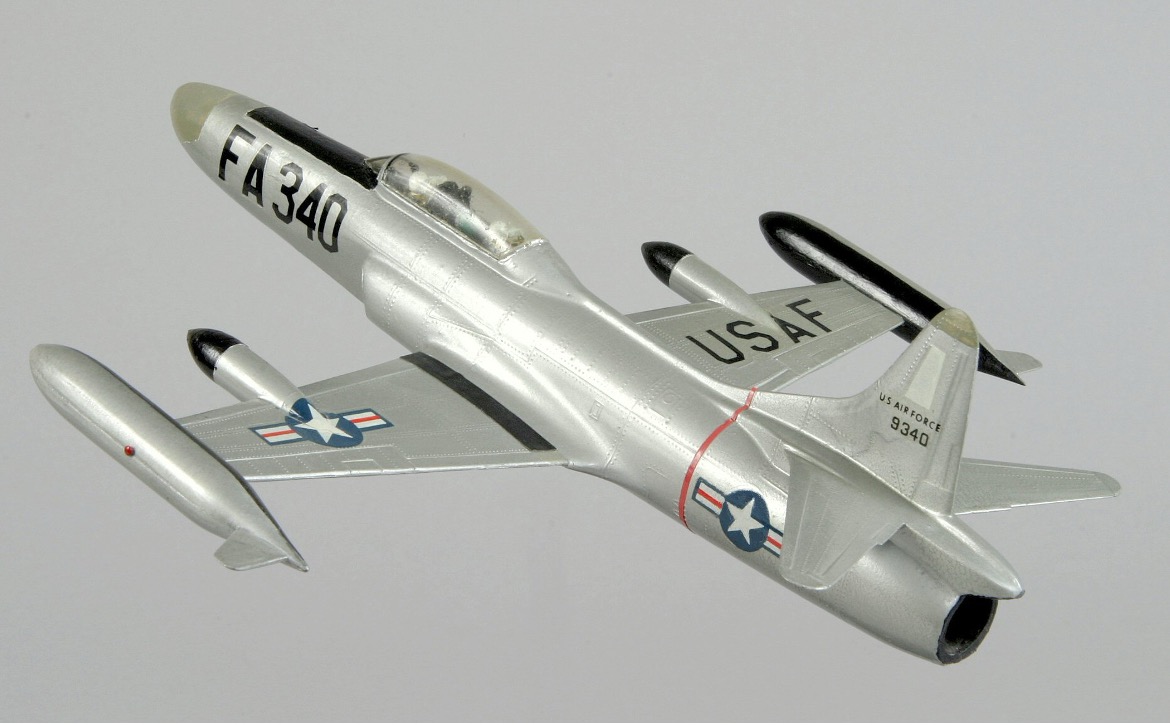
MODEL BY:
J. Fanning
Model Scale:
1/72
MODEL ADDED:
09/07/1965
historical significance
First Albuquerque Visit: 1952
Additional Information:
The Lockheed F-94 Starfire was a first-generation jet powered all-weather day/night interceptor aircraft designed and produced by the Lockheed Corporation. It was the first operational United States Air Force (USAF) fighter equipped with an afterburner as well as being the first jet-powered all-weather fighter to enter combat during the Korean War. The F-94 was developed in 1948 for the USAF who was looking for a new fighter interceptor that was capable of day and night operations and to replace the piston-engine aircraft fleets. The F-94 was derived from the successful Lockheed T-33 Shooting Star trainer and was viewed as a simple conversion from an established aircraft. The majority of the F-94’s external changes revolved around the adoption of a larger nose that accommodated the multiple guns, radar, and the automatic fire control system. The engine performance was also improved by the addition of an afterburner to the Allison J33 power plant that was used. The F-94 was equipped with radar to track enemy aircraft at night and the aircraft was flown by a pilot and radar operator.
In the interceptor role, the F-94 proved to have less endurance and greater reliance upon Ground Control Interception methods and the aircraft had a relatively brief operational life. The F-94 was eventually replaced beginning in the mid-1950s by the Northrop F-89 Scorpion and the North American F-86D Sabre. The last F-94 aircraft was withdrawn from USAF service in 1958 while the Air National Guard retired their F-94s one year later.
The 4925th Test Group was a United States Air Force unit that was last assigned to the 4901st Support Wing (Atomic), at Kirtland Air Force Base, in Albuquerque, New Mexico. Designated the 4925th Test Group (Atomic) on 1 July 1951, the unit was known as the “The Megaton Blasters”, and was responsible for the developmental flight testing of all USAF nuclear weapon delivery systems including conducting live test drops from 1951 through 1956. Following 1956 the 4925th focused on operational methods and equipment for delivering nuclear weapons. It was shut down on August 31, 1961 after it was inactivated by the Air Force Systems Command. The components of the 4925th’s mission were distributed among other units.
The Lockheed F-94 Starfire was attached to the 4925th Test Group (Atomic) at Kirtland Air Force Base in Albuquerque, New Mexico, for weapons suitability tests beginning in 1952. The F-94’s that were documented at Kirtland AFB include tail numbers FA-672, 15672 and 9340.
One of the photos show the radar pod mounted on the right wing of the F-94.
An F-94 is on display at the Air Force Museum.
GALLERY:
SEARCH OUR DATABASE:

